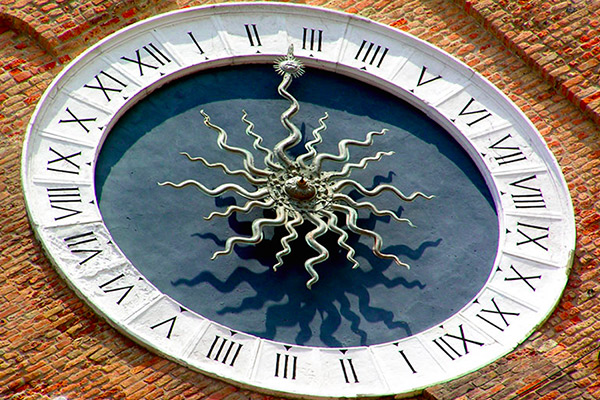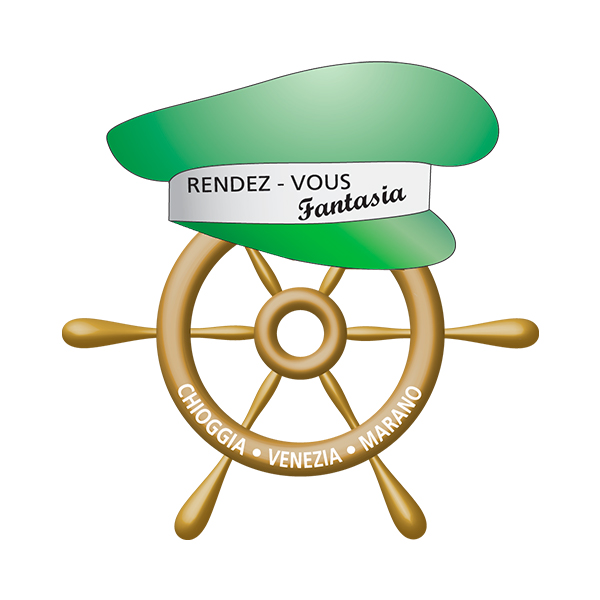THE OLDEST CLOCK IN THE WORLD
The ancient tower of St Andrew’s, who is situated on Corso del Popolo, Chioggia’s main street, is the oldest surviving clock.Together with the Salisbury Clock, they are an incredible testimony to human talent and craftsmanship in the 14th century. Although history records earlier clocks, even a century earlier, the uniqueness of these two specimens lies in their longevity and perfect functioning. Both dated 1386, the Chioggia clock has a further uniqueness due to the completeness and extent of its documentation, which allow us to identify the clock that we still admire today as precisely the same one mentioned in the 14th-century papers.
The city of Chioggia had the Dondi family as distinguished citizens: some hypothesise that there may be a link between the presence of the two great sages, Jacopo and Giovanni, and the existence of this clock. Fascinating as the possibility may be, no positive proof has yet emerged. Chioggia’s clock is a source of pride for the city, a tangible symbol of its history and cultural heritage. The ancient clock face located on the tower of Sant’Andrea, today functions by means of an electric mechanism. The clock of medieval origin, on the other hand, is located inside the tower, on the fifth floor, restored and functioning. In the second half of the 18th century, the clock was modified – as was common practice – to improve its accuracy, with the addition of a pendulum.”
On the outside of the tower, reduced in height after the War of Chioggia, the mechanism of the clock offers a decorative element thanks to a sunburst pattern surround in Istrian stone showing 12 roman numerals. At the centre of the face there is a flaming sun from which extents a long ray, which in turn indicates the hour. The medieval clock can be seen at the 5th floor of St. Andrew’s tower.
The bell tower of St’Andrew, dating back to the XI-XII century, was built for defence and, over time, it became the main element of the town, housing the clock of the ancient municipal palace. Besides the bell tower there is the homonimous church. The current building is from 1743 and represents the rebuilding of a fifteenth century church, which in turn was built on the remains of an ancient church (c. VIII century) and conserves its original layout. It has a Baroque-style facade and the Baptistery is attributed to Sansovino. The most important work of art is in the sacristy and shows the Crucifixion. The canvas was initially attributed to Palma il Vecchio and then later to Marescalco (Giovanni Buonconsiglio).
(source: Curiosando, www.conchioggiasi.com, wikipedia and by kind contribution of Dr. Addomine Marisa)



